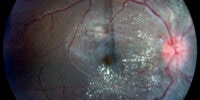Why Diabetic Retinopathy Requires Early Intervention

Diabetic retinopathy, a common microvascular complication of diabetes mellitus, necessitates early intervention due to its potential to cause severe visual impairment and blindness. This article aims to elucidate the importance of timely management by examining the prevalence and progression of diabetic retinopathy.
Emphasizing the significance of regular eye exams for individuals with diabetes, the article highlights the importance of early detection and monitoring.
Additionally, the article outlines the potential complications associated with untreated diabetic retinopathy, including macular edema, neovascularization, and retinal detachment.
Furthermore, the article will explore early intervention strategies that can effectively mitigate the progression of the disease and preserve visual function. These strategies may include tight glycemic control, blood pressure management, and timely laser therapy or intravitreal injections.
In conclusion, early intervention is crucial in managing diabetic retinopathy and preventing potential visual impairment and blindness. Regular eye exams, awareness of potential complications, and timely intervention can significantly improve outcomes for individuals with diabetes.
Key Takeaways
- Diabetic retinopathy is a common complication of diabetes mellitus and a leading cause of visual impairment and blindness worldwide.
- Up to 80% of individuals with diabetes will develop some stage of retinopathy within 20 years of diagnosis.
- Regular eye exams are crucial for early detection and intervention, as diabetic retinopathy is a leading cause of blindness in adults.
- Lifestyle modifications, pharmacological interventions, and surgical procedures are important early intervention strategies to control blood sugar levels, manage hypertension, and reduce the risk of progression.
The Prevalence of Diabetic Retinopathy
The prevalence of diabetic retinopathy is a significant concern due to its high incidence rates among individuals with diabetes. Diabetic retinopathy is a leading cause of visual impairment and blindness worldwide. The impact of diabetic retinopathy on quality of life cannot be understated, as it can result in vision loss and decreased independence.
It is estimated that up to 80% of individuals with diabetes will develop some stage of retinopathy within 20 years of diagnosis. However, it is important to note that the progression of diabetic retinopathy can be delayed or even prevented through lifestyle modifications. Lifestyle interventions such as maintaining optimal blood glucose control, managing blood pressure and cholesterol levels, and adopting a healthy diet and regular exercise regimen have all been shown to reduce the risk and slow the progression of diabetic retinopathy.
Understanding the Progression of Diabetic Retinopathy
Understanding the progression of diabetic retinopathy is crucial in determining the appropriate timing for medical intervention.
Progression Factors:
- Blood sugar levels: Poorly controlled blood sugar levels can accelerate the progression of diabetic retinopathy.
- Duration of diabetes: The longer an individual has diabetes, the higher the likelihood of developing diabetic retinopathy.
Treatment Options:
- Laser therapy: This intervention is effective in reducing the risk of vision loss by sealing leaky blood vessels and preventing their further growth.
- Anti-VEGF injections: These injections help to block the growth of abnormal blood vessels in the retina, thereby reducing the risk of severe vision impairment.
Understanding the factors that contribute to the progression of diabetic retinopathy enables healthcare professionals to identify individuals at higher risk and intervene early with appropriate treatment options.
Early intervention is critical to minimize vision loss and preserve ocular function in patients with diabetic retinopathy.
The Importance of Regular Eye Exams for Diabetics
Regular eye exams play a vital role in identifying and managing potential complications associated with diabetes. One such complication is diabetic retinopathy, a leading cause of blindness in adults. Early intervention is crucial in preventing blindness and managing blood sugar levels. Regular eye exams allow for the early detection of diabetic retinopathy, enabling prompt intervention and treatment. These exams involve a comprehensive evaluation of the eye, including a dilated fundus examination, which allows for a detailed assessment of the retina. By monitoring the progression of diabetic retinopathy and implementing appropriate interventions, such as laser treatment or medication, the risk of vision loss can be significantly reduced. Table 1 provides an overview of the recommended frequency of eye exams for individuals with diabetes, based on the guidelines from the American Diabetes Association.
Table 1: Recommended Frequency of Eye Exams for Individuals with Diabetes
| Diabetes Type | Duration of Diabetes | Recommended Frequency of Eye Exams |
|---|---|---|
| Type 1 | 5 years or longer | Annually |
| Type 2 | At diagnosis | Annually |
| Gestational | During pregnancy | Within the first trimester |
Regular eye exams are essential for individuals with diabetes to prevent blindness and effectively manage their blood sugar levels. By adhering to the recommended frequency of eye exams, individuals can minimize the risk of diabetic retinopathy and ensure timely intervention if complications arise.
Potential Complications of Untreated Diabetic Retinopathy
Untreated diabetic retinopathy can lead to severe vision loss and blindness, making timely detection and management crucial for individuals with diabetes. The potential blindness resulting from this condition has a significant impact on the quality of life for affected individuals.
The potential complications of untreated diabetic retinopathy include:
- Visual impairment: Diabetic retinopathy causes damage to the blood vessels in the retina, leading to a gradual deterioration of vision. The loss of visual acuity can greatly hinder daily activities and reduce independence.
- Reduced quality of life: The impact of vision loss extends beyond physical limitations. Individuals with untreated diabetic retinopathy may experience increased dependence on others, limitations in social and recreational activities, and decreased overall well-being.
To avoid these potential consequences, early intervention through regular eye exams and appropriate management strategies is essential. Timely detection and treatment of diabetic retinopathy can help prevent or slow down the progression of the disease, preserving vision and maintaining a higher quality of life for individuals with diabetes.
Early Intervention Strategies for Diabetic Retinopathy
Implementing appropriate management strategies for diabetic retinopathy can significantly mitigate the potential complications associated with this condition. Early intervention is crucial in preventing blindness and preserving vision in individuals with diabetic retinopathy. There are several management options available that aim to control blood sugar levels, manage hypertension, and reduce the risk of progression. These strategies include lifestyle modifications, pharmacological interventions, and surgical procedures. Lifestyle modifications involve maintaining a healthy diet, engaging in regular physical activity, and quitting smoking. Pharmacological interventions include the use of medications such as anti-VEGF agents and corticosteroids to reduce inflammation and manage blood vessel growth. Surgical procedures like laser photocoagulation and vitrectomy may be required in advanced cases. The table below summarizes the different management options for diabetic retinopathy:
| Management Options | Description |
|---|---|
| Lifestyle Modifications | Healthy diet, regular exercise, smoking cessation |
| Pharmacological Interventions | Anti-VEGF agents, corticosteroids |
| Surgical Procedures | Laser photocoagulation, vitrectomy |
Frequently Asked Questions
What Are the Risk Factors for Developing Diabetic Retinopathy?
Risk factors for developing diabetic retinopathy include duration of diabetes, poor glycemic control, hypertension, hyperlipidemia, renal disease, and pregnancy. Prevention strategies and management options aim to control these risk factors to prevent or delay the onset and progression of the disease.
How Does Diabetic Retinopathy Affect Vision?
Diabetic retinopathy, a complication of diabetes, can lead to vision impairment due to retinal damage. It affects the blood vessels in the retina, causing leakage and bleeding, leading to visual complications if not treated promptly.
Can Diabetic Retinopathy Be Prevented?
Prevention strategies for diabetic retinopathy involve lifestyle modifications such as maintaining good glycemic control, regular eye examinations, blood pressure control, and lipid management. These measures are crucial in reducing the risk of developing diabetic retinopathy.
Are There Any Alternative Treatments for Diabetic Retinopathy Besides Early Intervention?
Alternative treatments for diabetic retinopathy, apart from early intervention, have been explored. However, the effectiveness and long-term outcomes of these non-intervention options remain uncertain, warranting further research and clinical trials.
What Are the Long-Term Effects of Diabetic Retinopathy if Left Untreated?
Left untreated, diabetic retinopathy can lead to various long-term complications, including severe visual impairment. The progression of the disease can result in irreversible damage to the retina, affecting the individual’s ability to see clearly.









